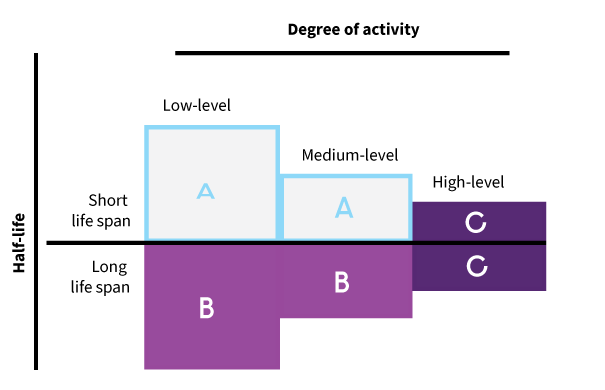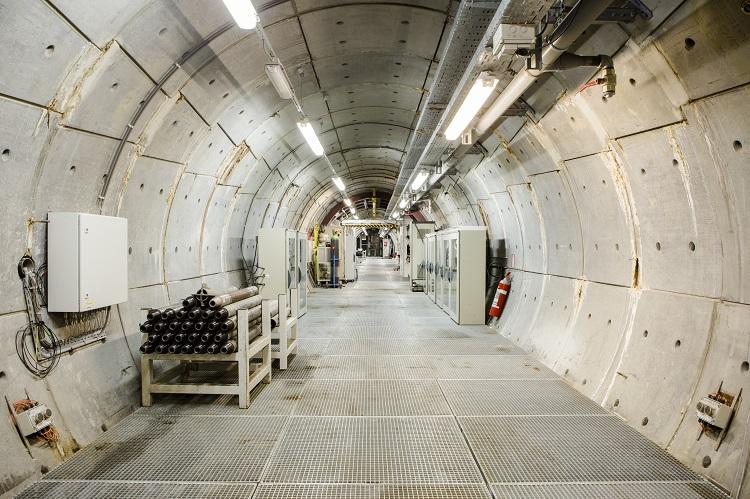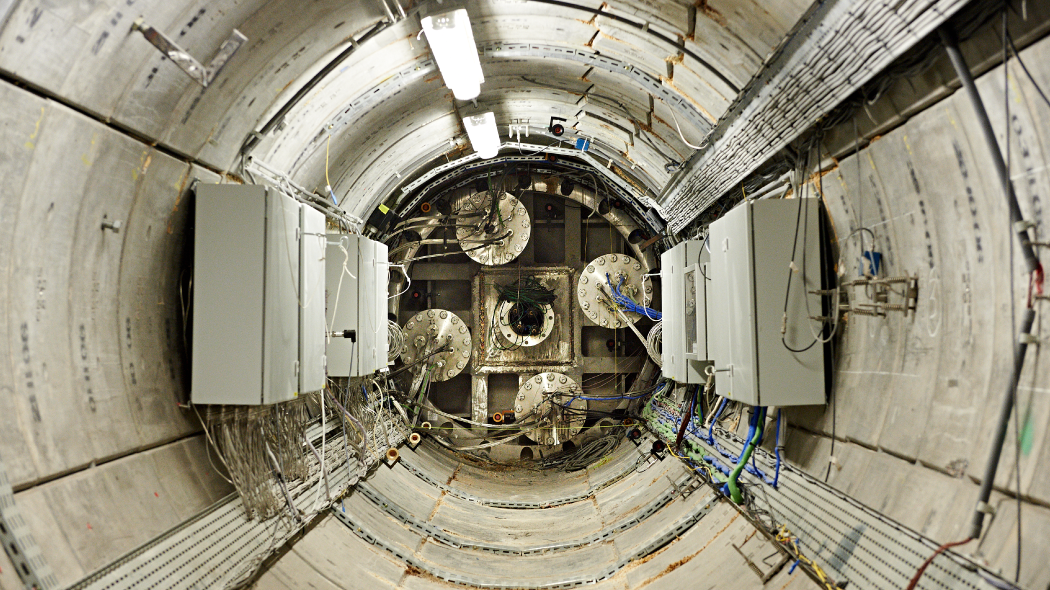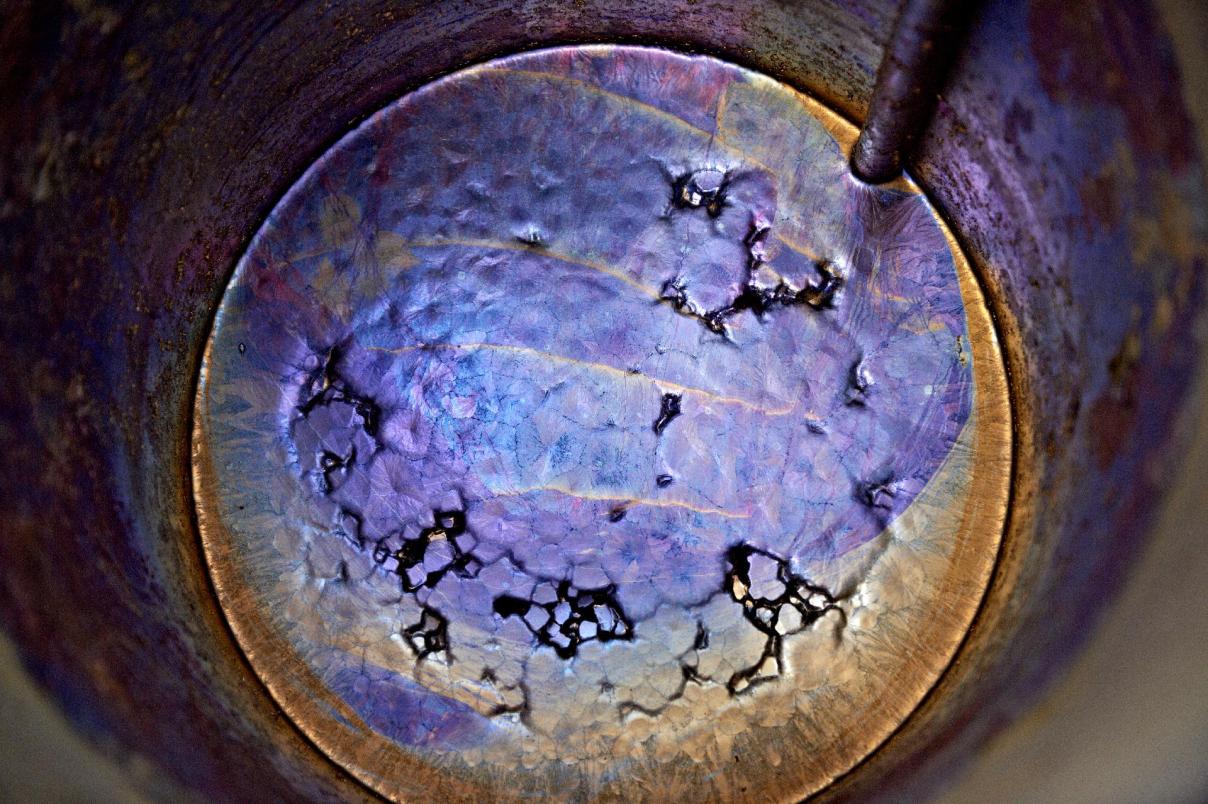Fanny’s fact check: Do we store our high-level radioactive waste 400 metres underground?
Fanny Kiekeboe doesn't just stay on the surface at Nuclean, she also delves deep underground. That's where the fictional waste processing plant is excavating an underground repository for highly radioactive and long-lived waste. This repository didn't just spring from the imagination of Nix and Charel Cambré. A decision in principle was also made in Belgium to dispose of this waste deep underground. Where exactly does this waste come from? How do we get one of these geological repositories? How do we avoid and reduce the number of drums - destined for deep underground? We explain it all here!
© In collaboration with De Standaard Uitgeverij. All illustrations and storylines belong to them.

You discovered in 'Fanny's Fact check: Does low-level radioactive waste come from hospitals?" that waste from nuclear applications is first sorted and the recovered if possible. Waste that is too radioactive or long-lived will eventually be disposed of deep underground by ONDRAF/NIRAS. Before that happens, we at SCK CEN make every effort to minimise this waste. This falls under our nuclear lifecycle expertise, one of the three areas of our corporate strategy Exploring 2040.
A good example of this circular economy is the RECUMO project, in which SCK CEN and the National Institute for Radioelements (IRE) have joined forces to ensure the security of supply of these medical radioisotopes. As part of this project, we will give highly radioactive residues from the production of medical radioisotopes a new purpose in the coming years, by converting it to targets that we can use again to make these isotopes, among other things.

What waste is destined for deep disposal?
The highly radioactive waste in Belgium is indeed primarily spent nuclear fuel (whether reprocessed or not) from our nuclear power plants. Fortunately, nuclear bombs have never been produced in Belgium, so we do not have this kind of waste and therefore do not need to dispose of it.
At SCK CEN, we work only on peaceful applications of nuclear science. This is clearly stated in one of our four founding principles: we form a blockade to nuclear proliferation. You will discover all about our efforts to prevent nuclear technology from being used for undesirable purposes in Fanny's Fact check 'Non-proliferation'
But it is not just high-level radioactive waste that will be disposed of deep underground. In Belgium, all long-lived waste will end up in a similar repository. This decision was enshrined in a Royal Decree on 28 October 2022.

Waste categories
Looking at the classification of radioactive waste in Belgium, category B and C waste will be transported to an underground disposal site. As mentioned above, category C in Belgium is primarily spent nuclear fuel (whether reprocessed or not) from our nuclear power plants and research reactors.
The waste in category B, medium and low-level long-lived waste, is primarily generated during the production and reprocessing of nuclear fuel, certain other activities in nuclear power plants that use filters and resins, and when plants are decommissioned, which will become increasingly important in the future.
Waste in category C, and especially category B, is also produced to a lesser extent in other branches of the nuclear industry. The production of medical radioisotopes, for example, in which our BR2 reactor plays a hugely important, global role, also generates waste.

How long is long?
According to the definition, long-lived waste has a half-life of more than 30 years. Fanny's guide mentions 200,000 years, but some radioisotopes even stay radioactive for a million years! One million years, it's difficult to fathom. If they're lucky, a person can live to be 100 years old. The oldest buildings and civilizations we know of are a few 1,000 years old. Radioactive waste must be shielded from humans and the environment for longer than anything man has built so far, for even longer than homo sapiens has existed. Enter ... geology!
Geology rocks!
Geological strata have existed for millions of years, and here you can find systems that have remained stable all that time. Stable earth layers can therefore offer the guarantee that above-ground storage buildings can't. That offers opportunities to build repositories down here.

Research into deep or geological disposal
When the first commercial nuclear power plants entered the Belgian energy landscape in the 1970s, as veritable pioneers, we in Belgium also wrestled with the question of the long-term management of highly radioactive and/or long-lived waste. We therefore started researching deep clay layers as a solution to store the radioactive waste. As such, HADES saw the light of day: the laboratory 225 metres underground in the Boom Clay. This lab is managed by EURIDICE, the partnership between SCK CEN and ONDRAF/NIRAS.
Did you know you can take a virtual tour into the heart of HADES? The Tabloo visitor and events centre offers a lift experience that takes you virtually into the deep underground.
Level of activity
The level of activity plays a crucial role in how we manage radioactive waste. Highly radioactive and/or long-lived waste needs to be stored underground. What do we mean by highly radioactive? The activity of the waste is calculated by measuring the contact dose rate. This is the rate at which someone is exposed upon contact.
How do you measure something you cannot see, smell, hear or feel? You can read that shortly in Fanny’s fact check on ‘Measuring radioactivity’!
We differentiate between three levels of activity:
-
Low-level waste
Fewer than 5 milliSievert per hour
-
Medium-level waste
Between 5 milliSievert and 2 Sievert per hour
-
High-level waste
More than 2 Sievert per hour

Warm, warmer,...
Highly radioactive radiation is so intense that it gives off heat during radioactive decay. These waste drums first need to cool above ground for several decades before they can be disposed of in a deep clay layer. The clay would become too hot otherwise and could cause safety problems. How does clay react when it heats up over a long period of time? EURIDICE is also investigating this question in the 'PRACLAY' experiment.

Transmutatie
Deep or geological disposal is the safest and most responsible final destination for B&C waste. In the meantime, science is pushing ahead and researchers are also looking at technologies to divide spent fuel into fractions. Each fraction can then be treated in a more targeted and efficient way. Some fractions can be converted into less radiotoxic short-lived substances by transmutation. With MYRRHA, SCK CEN is leading the field in research into this promising technique which can further optimise geological disposal.
Do we store our high-level radioactive waste 400 metres underground?
In October 2022, the decision was taken at the political level for ONDRAF/NIRAS to build a repository deep underground for our B and C-category waste. However, it is not yet clear exactly where and in which layer this repository will be built. The depth of the repository and the overall length of the galleries still need to be decided on. This is the task of ONDRAF/NIRAS, which is working closely with SCK CEN to look into the feasibility, safety and technical requirements of just such a repository. The HADES underground lab has been conducting research into deep disposal in clay for more than 40 years.
How large the repository will be depends on how much waste needs to be disposed of. We know for sure that there will be several kilometres of galleries! Although 50 km, like in the comic strip, is probably a bit too much. With our expertise and technologies, we continue to work on optimising this quantity of waste. Some of our projects that are making a contribution in this regard are ANUBIS, SMELD and RECUMO.
When will the disposal site be ready?
It will still be several decades before construction starts on a geological repository. There will first be a participatory process to create societal support. In 2023 and 2024, on the initiative of ONDRAF/NIRAS, the King Baudouin Foundation organised Nu voor Morgen, a broad public debate on how to manage B and C-category waste in the future. There is still a long way to go before we arrive at the definitive solution, supported by the scientific knowledge of SCK CEN, ONDRAF/NIRAS and EURIDICE.